Tilicho Lake, also widely known as Tilicho Tal, is a spectacular glacial lake in the Annapurna Region of the Nepal Himalayas. It is a trekking as well as a pilgrimage destination. Most trekkers visit this lake as a side trip while trekking along the Annapurna Circuit Route or the Thorung La Pass. Surrounded by tall snow-covered mountains and frozen glaciers, Tilicho is one of the world's most beautiful high-altitude lakes. It was Nepal's highest lake, but after the discovery of Kanjin Sara Lake in Chame, at an elevation of 5002 meters, in 2019, Tilicho slid to the second spot.
Located in the Manang district, Tilicho Lake is a must-visit destination for trekkers walking along the Annapurna Circuit Trail. The lake also has a deep spiritual value. For Hindus, Tilicho is the sacred lake Kag Bhusundi, which is mentioned in the Hindu epic Ramayana. Buddhists revere this lake as the Buddhist saint Milarepa is said to have meditated on the banks of Tilicho.
Tilicho Lake Highlights
- Amazing view of Tilicho Peak, Nilgiri Himal, Annapurna Range, Gangapurna, etc.
- Experience pristine and raw nature undisturbed by human habitation
- Fewer trekkers on the trail
- Covered with snow throughout the year
- Stunning colors – a turquoise lake surrounded by pure white snow
- Trek through culturally rich mountain villages to reach the lake
Tilicho Lake Nepal: Is Tilicho the world's highest lake?
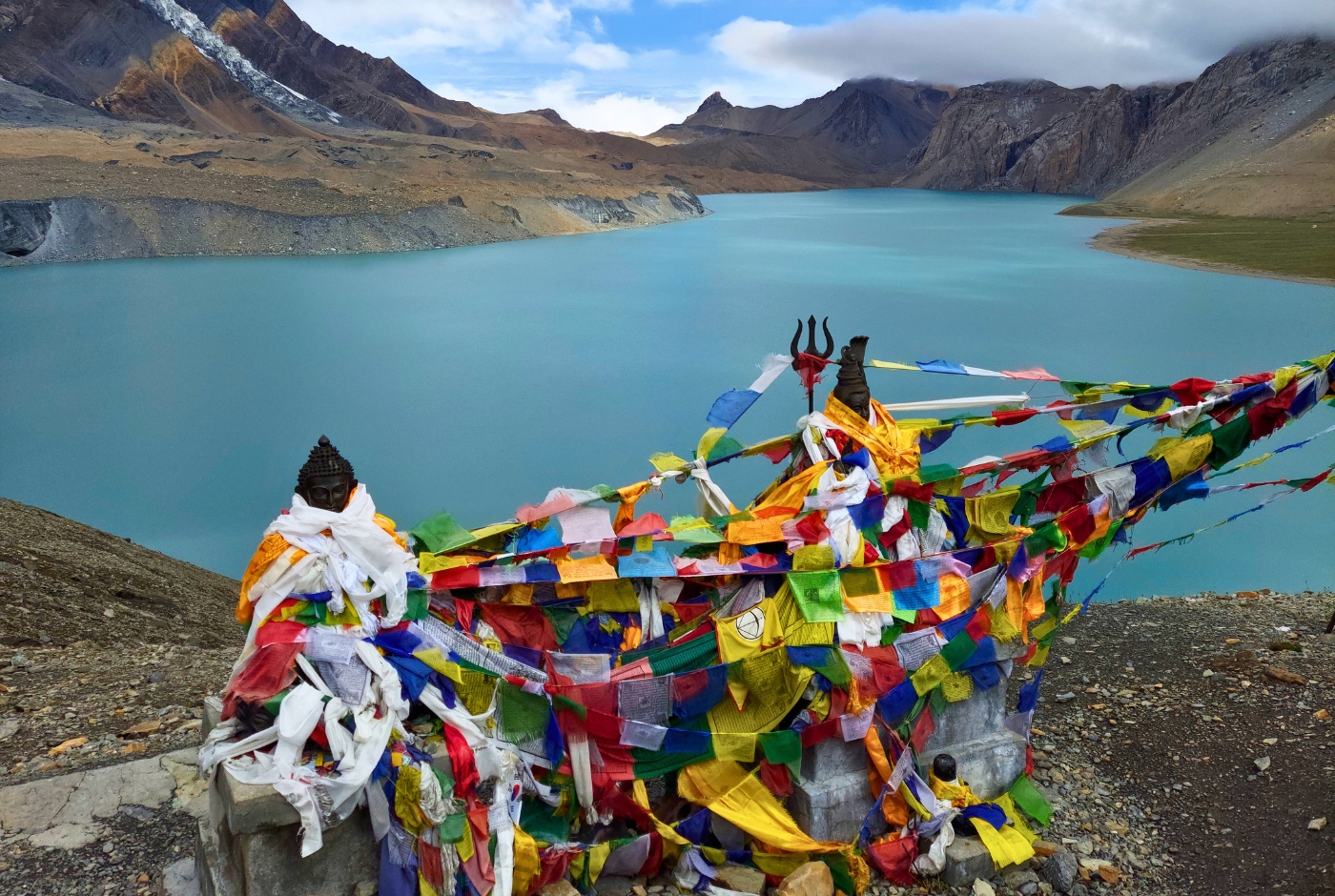
Tilicho Lake Location: Where is Nepal Tilicho Located?
- Country: Nepal
- Province: Gandaki Province
- District: Manang District
- Conservation Area: The lake is situated within the protected zone of the Annapurna Conservation Area Project (ACAP).
Geographical Coordinates:
The approximate geodetic coordinates for the centre of Tilicho Lake are:
- Latitude: 28° 41' 25" North (Decimal: 28.690278°)
- Longitude: 83° 51' 10" East (Decimal: 83.852778°)
(Please note that slight variations may exist depending on the specific datum and point of measurement on the lake.)
Is Tilicho the world's highest lake?
No, Tilicho is not the world's highest lake, though it is often called that due to its altitude of 4,949 meters and its prominence in trekking. The actual highest lake is Ojos del Salado, a volcanic lake in the Andes, which holds the title.
How to reach Tilicho Lake from Pokhara or Kathmandu?
To access the trailhead to Tilicho Lake from Pokhara, one has to reach Khangsar, the last village on the Tilicho trail. To get to Khangsar, you can take a jeep ride to Manang or Chame and walk to Khangsar from there. Or you can trek from Bulbule or Dharapani and trek for a couple of days, acclimatizing before hiking to Tilicho Lake.
People these days also fly directly to Hongde Airport in Manang from Pokhara or Kathmandu and start their trek from Manang. But starting directly after flying into Manang can be dangerous as you may suffer from altitude sickness. If your body is not properly acclimatized, there’s a high risk of suffering from AMS.
There's also a rough dirt track to Khangsar, and cyclists and bikers can ride all the way to Khangsar. Some daring cyclists ride all the way to Tilicho Base Camp.
Those who can afford it can use helicopter charters. Helicopter companies offer Tilicho Lake Helicopter Tour from Pokhara or Kathmandu. You can fly directly to the lake, spend some time there and return to the city the same day. Heli tours to Tilicho Lake are quite popular among Hindu pilgrims who cannot trek to Tilicho Lake.
Size and Depth of Tilicho Lake Analysis
Tilicho Lake lies in Nepal’s Annapurna region and ranks among the highest lakes in the world. It measures about 4 kilometers long and 1.2 kilometers wide, covering a surface area of 4.8 square kilometers (1.9 square miles). The lake has an average depth of 85 meters (279 feet). Its high-altitude setting and size make it a key point of interest along the Annapurna Circuit.
Peaks visible from Tilicho Lake
Tilicho Lake sits in a dramatic amphitheater of towering Himalayan peaks that define its striking landscape.
Directly above the lake stands Tilicho Peak, rising to 7,134 meters (23,406 feet) and serving as one of its closest and most prominent landmarks.
To the north, the Nilgiri Himal range frames the horizon with its trio of summits—Nilgiri North, Central, and South—creating a rugged and imposing backdrop.
On the eastern side, the sharp ridges of Gangapurna, at 7,455 meters (24,457 feet), add to the panorama with their glaciated faces. Nearby, Khangsar Kang, also known as Roc Noir, towers at 7,485 meters (24,557 feet), casting a dramatic presence over the lake’s edge. In the distance, Annapurna II, Annapurna III, and Annapurna IV extend the vista, linking the scene to the larger Annapurna massif.
Together, these peaks surround Tilicho Lake with sheer walls of rock and ice, making it one of the most visually stunning locations on the Annapurna Circuit.
Religious Significance of Tilicho Lake
Tilicho Lake, located in Nepal’s Annapurna region, carries deep spiritual significance for both Hindus and Buddhists.
Hindus identify it as the legendary Kak Bhusundi Lake from the Ramayana, where the sage Kak Bhusundi, in the form of a crow, narrated the epic to Garuda, the king of birds. The lake’s calm, high-altitude setting makes it a revered site for meditation, prayer, and spiritual cleansing, with many pilgrims believing that its icy waters can purify the soul.
For Buddhists, Tilicho Lake is honored as a place where the saint Milarepa is said to have meditated, adding to its sacred atmosphere. The site symbolizes the convergence of Hindu and Buddhist traditions, making it a rare pilgrimage destination that unites two faiths. Religious festivals often draw devotees to the lake, where prayers and rituals are performed against a backdrop of snow-covered peaks.
Culturally, the lake holds importance for the Gurung and Thakali communities, who regard it as part of their spiritual heritage. Combined with its dramatic Himalayan scenery, this blend of cultural and religious reverence creates an atmosphere of awe that continues to attract trekkers, pilgrims, and spiritual seekers alike.
Best Time for Gokyo Lake
The period most widely recommended by mountaineering experts and seasoned trekkers is the autumn season, which typically runs from mid-September through to late November. During these months, the monsoon rains have usually abated, resulting in remarkably clear atmospheric conditions. Daytime temperatures are generally moderate and pleasant for trekking, although nights at higher altitudes will invariably be cold. The stability of the weather during this window is a significant draw.
Alternatively, the spring season, from March to May, presents another favourable opportunity. As winter recedes, temperatures begin to rise, making for comfortable trekking conditions. A distinct advantage of spring is the profusion of rhododendrons and other alpine flora, which bring vibrant colour to the lower and mid-altitude sections of the trail. Visibility remains generally very good, though there can be a tendency for some afternoon haze to develop, particularly as May progresses and the pre-monsoon period approaches.
Conversely, the winter months (December to February) present significant challenges due to extremely low temperatures and the potential for heavy snowfall. Similarly, the monsoon season (June to early September) is generally inadvisable due to persistent rainfall, obscured mountain views, leeches at lower elevations, and an increased risk of landslides.
In summary, for the clearest views and most stable weather, autumn is generally considered prime. For warmer temperatures and blossoming flora, spring is an excellent alternative. Regardless of the chosen season, comprehensive preparation for variable mountain weather is, of course, paramount."
Which month is best to visit Tilicho Lake?
The best time to visit Tilicho Lake is during spring (March to May) and autumn (September to November), offering stable weather, clear skies, and comfortable temperatures for trekking. Spring brings wildflowers and warm days, while autumn provides excellent mountain views and mild conditions. The winter is discouraged due to extreme cold, heavy snow, and trail obstructions, and the monsoon season is less favorable due to rain, landslides, and poor visibility.
Tilicho Lake Trek 5 days
You start your trek from the village of Khangsar. After walking for 4 to 5 hours, you reach the Tilicho base Camp, where you can stay overnight. There are a few lodges that cater to trekkers walking along this route. After staying overnight at the base camp, you can start your hike early (around 2-3 AM) the next day.
Tilicho Lake: Highest Lake in the world
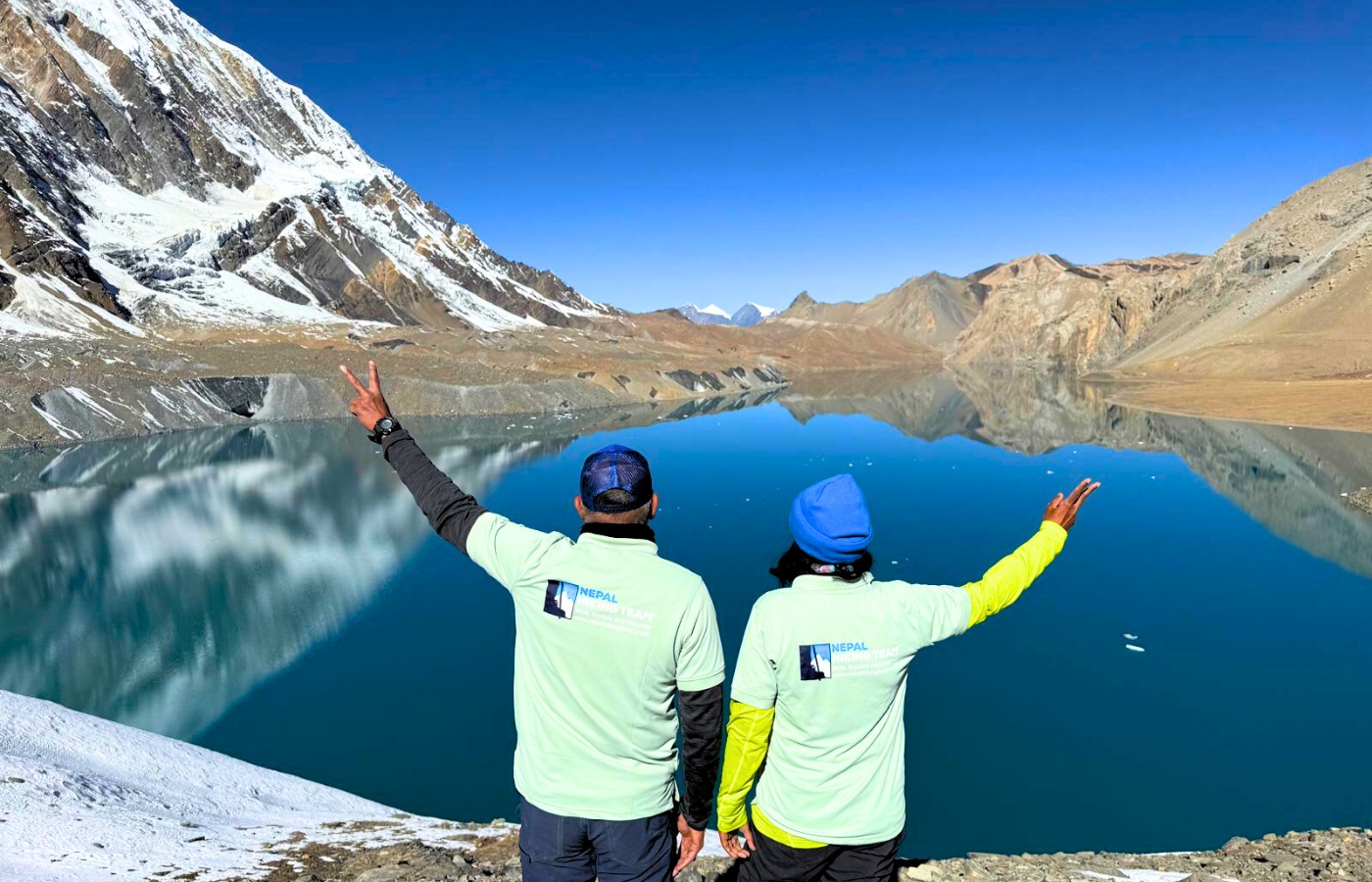
The trail is long and tiring, and the increase in altitude makes walking difficult. It's difficult to breathe at this point, and further, the freezing cold makes taking each step an ordeal. After starting from Base Camp for about an hour, you reach a place known as Bais Ghumti(22 turnings), where you will have to walk along a winding route up a hill with 22 switchbacks. After covering the switchbacks, you will come to the top of the mountain and walk across a plain field of snow for about 45 minutes. After some steep ascents, you will finally reach Tilicho Lake.
If you want to save time discovering the package, check out our 17-day Annapurna Circuit Trek with a visit to Tilicho Lake.
Tilicho Lake height and Altitude | Elevation of Tilicho above sea level
Tilicho Lake in Nepal is located at an altitude of approximately 4,919 meters (16,138 feet) above sea level. It is one of the highest lakes in the world and is known for its breathtaking views and the challenging trek to reach it. The lake is also notable for its size, covering an area of about 4.8 square kilometers (1.85 square miles) and stretching around 4 kilometers (2.48 miles) in length.
Base Camp of Tilicho Lake
Tilicho Lake Base Camp is a crucial stop for trekkers on the Annapurna Circuit, particularly those wanting to visit Tilicho Lake, one of the highest lakes in the world. The base camp itself is located at an altitude of 4,150 meters (13,615 feet). Trekkers typically spend a night or two here to acclimatize before heading up to the lake, which sits at 4,919 meters (16,138 feet). The base camp offers basic teahouse accommodations, providing trekkers with a place to rest and refuel before the challenging trek to the lake.
Key aspects of Tilicho Lake Base Camp:
- Altitude: 4,150 meters (13,615 feet).
- Location: Part of the Annapurna Circuit trek, situated before the final ascent to Tilicho Lake.
- Accommodation: Basic teahouses with rooms, beds, and shared or attached toilets.
- Facilities: Limited facilities, with extra charges for charging devices and potentially for Wi-Fi.
- Purpose: Serves as a crucial acclimatization point for trekkers heading to Tilicho Lake, which is higher in altitude.
- Alternative to Camping: Camping near Tilicho Lake is not recommended due to extreme weather conditions, making the base camp a more suitable option.
Difficulty Level of Tilicho Lake
The trek to Tilicho Lake is moderately difficult. Since the lake is situated at an altitude of 4919 meters getting there will be physically strenuous, especially for those not used to walking in high altitudes. Proper acclimatization is very important before setting off on your trek.
The route in some sections is quite dangerous. For about an hour or so, you will have to walk through a landslide-prone area. The trail winds through the sides of barren mountains where loose rocks and debris keep sliding down. You will be walking on paths with exposed sides and with a sheer drop. Most sections of the trail will be covered with snow, so having appropriate shoes is very important.
Nepal Tilicho Lake also known as Tilicho Tal
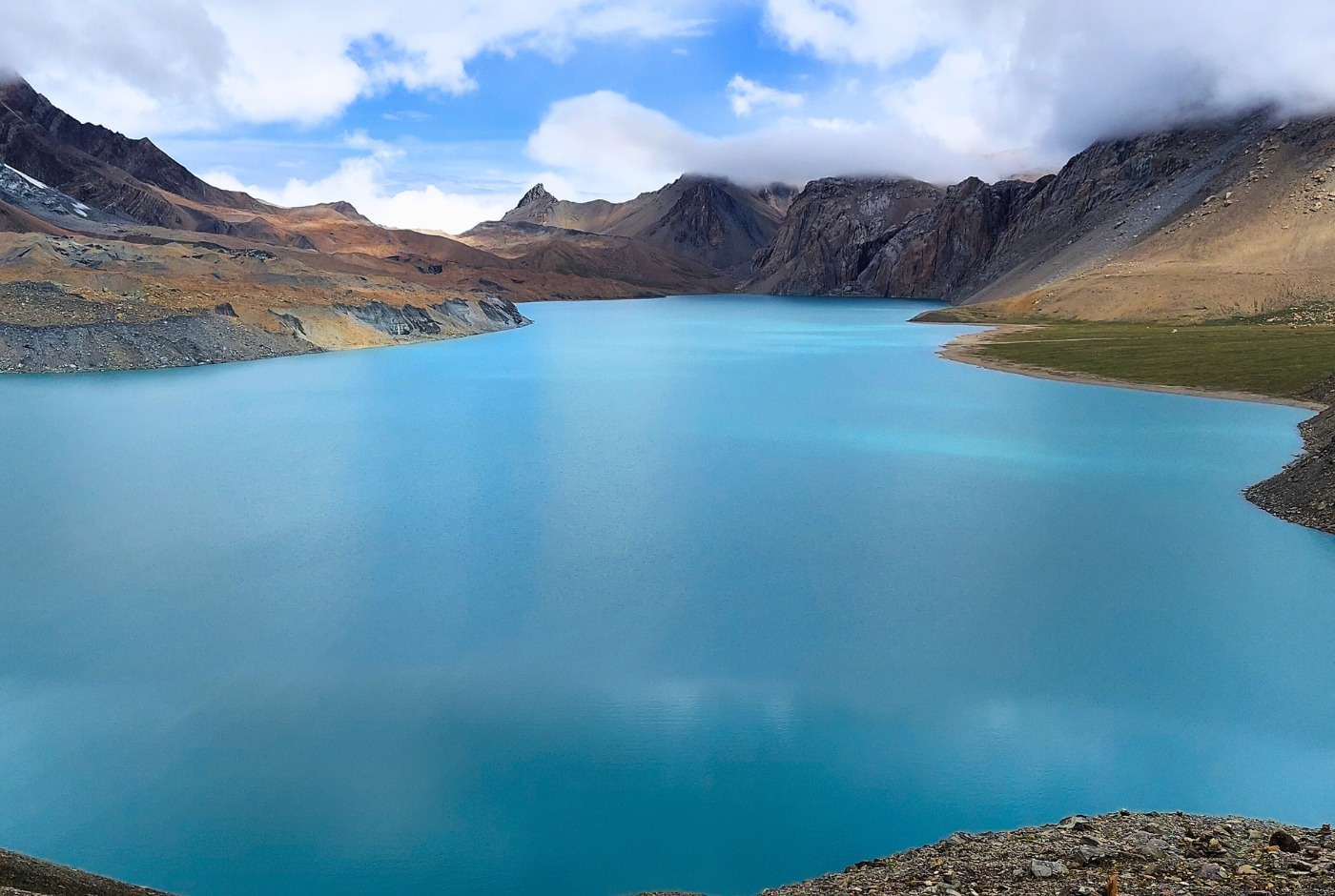
How difficult is Tilicho Lake Trek?
The Tilicho Lake trek is moderately difficult, requiring good physical fitness and endurance due to high altitude (4919m) and steep, rocky terrain. Key challenges include a landslide-prone section with loose rocks and narrow, exposed paths, and the risk of altitude sickness. Proper acclimatization and appropriate footwear are essential for a safe and enjoyable trek.
Accommodation and Food
There are teahouses and lodges available in Manang, Chame, and other points on the trekking route. At Tilicho Base Camp, there are a few lodges where you can stay overnight. The facilities offered at most of the lodges are pretty basic - rooms with beds(mattresses, pillows, and quilts or blankets), attached or shared toilets, etc. The lodge owners take an extra charge for charging electronic gadgets. Wi-fi, if available, also costs extra. There's no central heating at the lodges, and you will have to rely on your warm clothes and blankets to keep you warm through the chilly night.
Food, as in other mountainous regions of Nepal, is quite costly here. As it's difficult to transport items from the cities, the food items sold along the route can be three or four times higher than in the lower towns and cities. However, you can expect freshly cooked and nutritious meals at the teahouses.
Safety
As the lake lies at an altitude of 4919 meters, altitude sickness is a big concern. One should acclimatize properly before heading to Tilicho Lake. Drink plenty of warm fluids and water to keep yourself hydrated. The route to the lake is also a bit hazardous. There are landslide-prone areas, and the narrow paths have sheer drops. Having insurance coverage is essential in case of any untoward incident during the trek.
Tilichos Lake
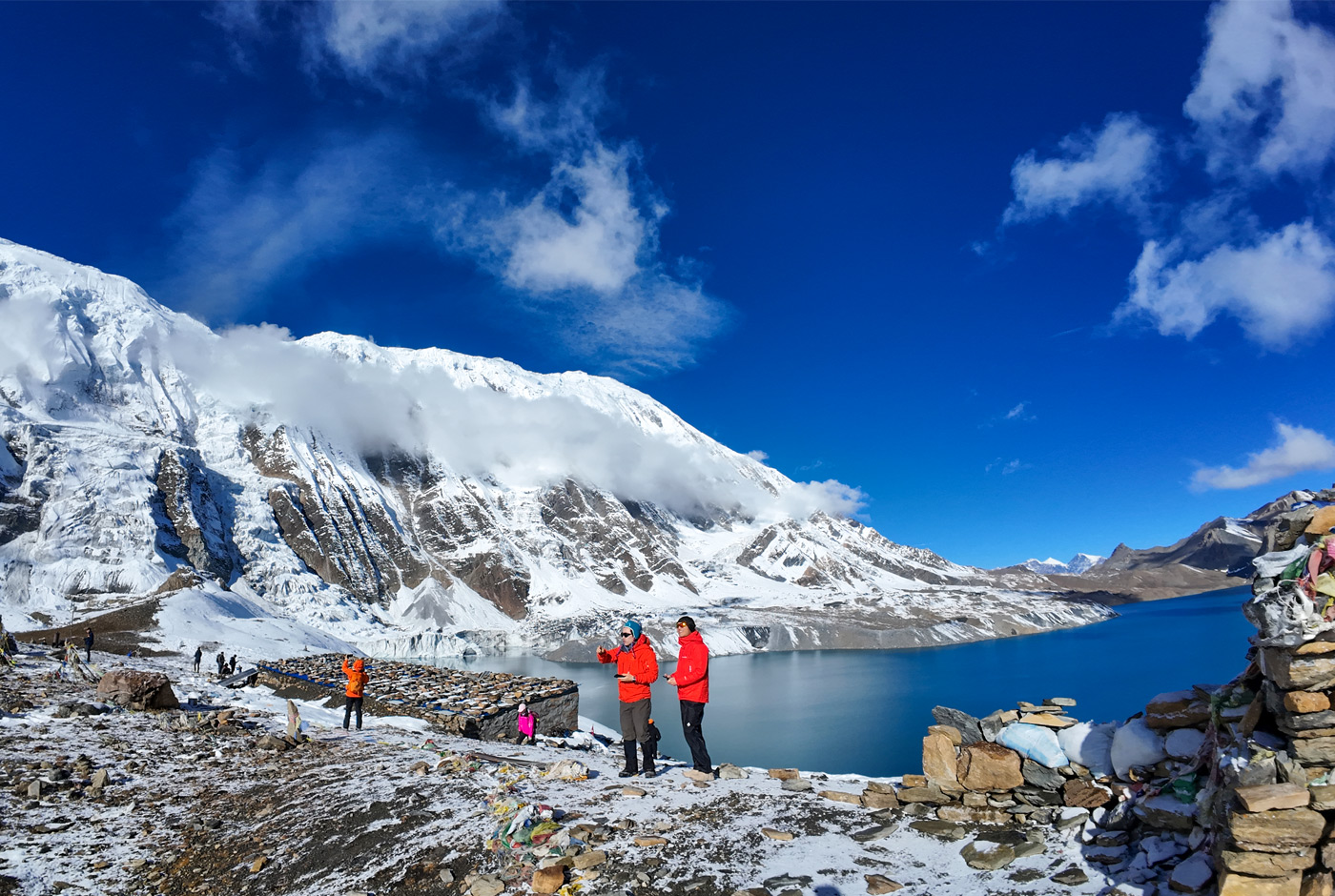
Other Attractions close to Tlicho Lake
Thorung La Pass, Ice Lake, Muktinath Temple, and Jomsom are some of the attractions close to Tilicho Lake. The cultural experience while trekking along this route is also quite amazing. The Bhotia villages(Chame, Pisang, Manang, etc.) on this route follow Tibetan culture and traditions. Their way of life, attire, and religion are all quite different from those of the middle hills and the cities. The people living in this part of Nepal trace their origin to Tibet, which lies close to this region. They have preserved the old Tibetan way of life, language, and culture.
Is Tilicho the highest lake in the world?
The answer is no. While the internet is flooded with information about Tilicho being the world's highest lake, it’s not true. The world's highest lake is Ojas Del Salado in South America. Situated between Chile and Argentina, Ojas del Salado lies at an altitude of 6390 meters. There are many lakes in South America as well as Tibet that are located higher than Tilicho.
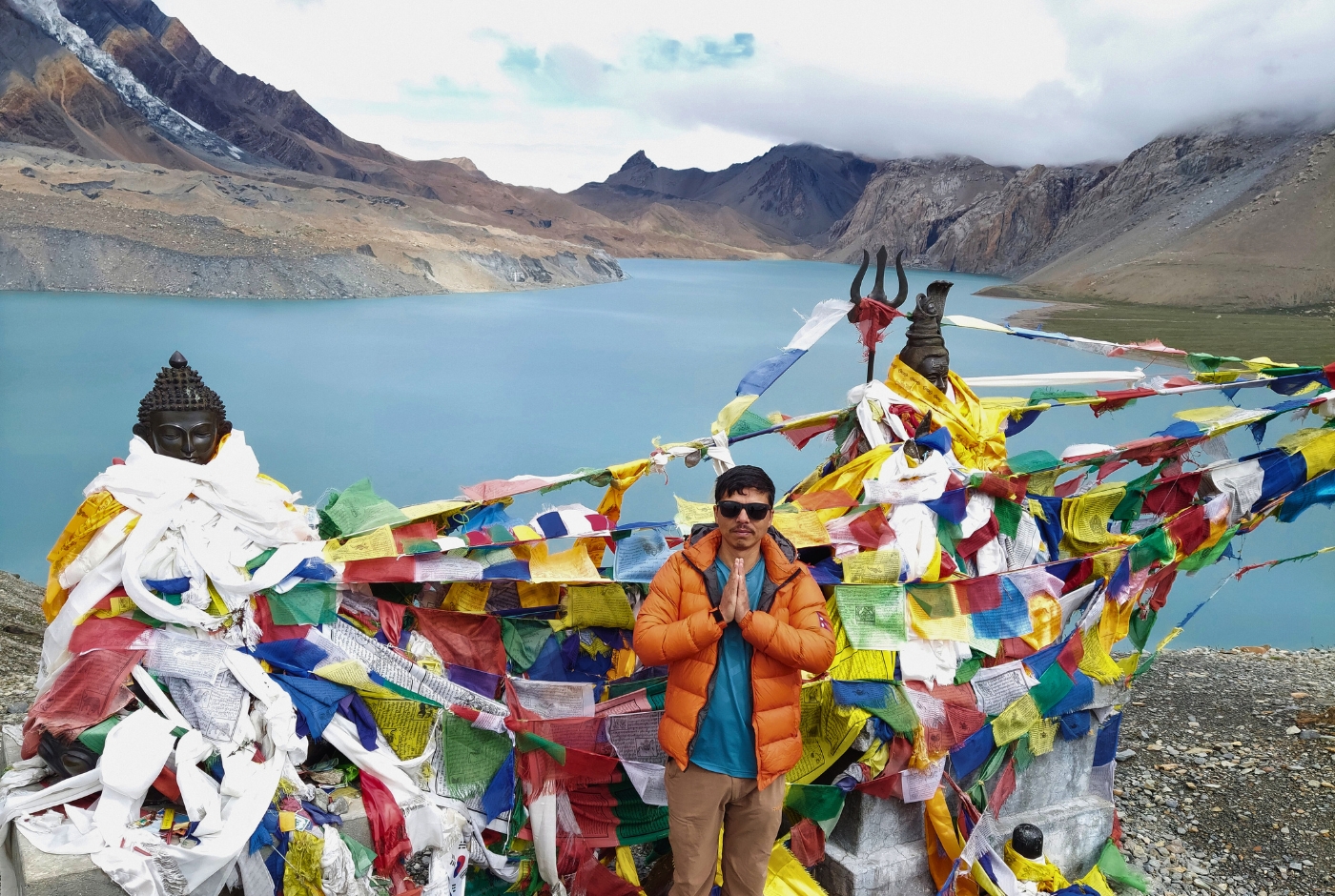
One will be surprised to know that Tilicho is not even the highest lake in Nepal. After the discovery of Kajin Sara Lake in Chame by a group of mountaineers in 2019, Tilicho lost the title of Nepal's highest lake.
Tilicho may not be the world's highest lake, but it undoubtedly is one of the world's most beautiful and gorgeous high-altitude lakes.
Conclusion
If you are trekking along the Annapurna Circuit trail, you should not miss out on the opportunity to visit Tilicho Lake. Surrounded by undisturbed nature and some of the tallest peaks in the world, Tilicho Lake remains one of the natural wonders of the Himalayas.


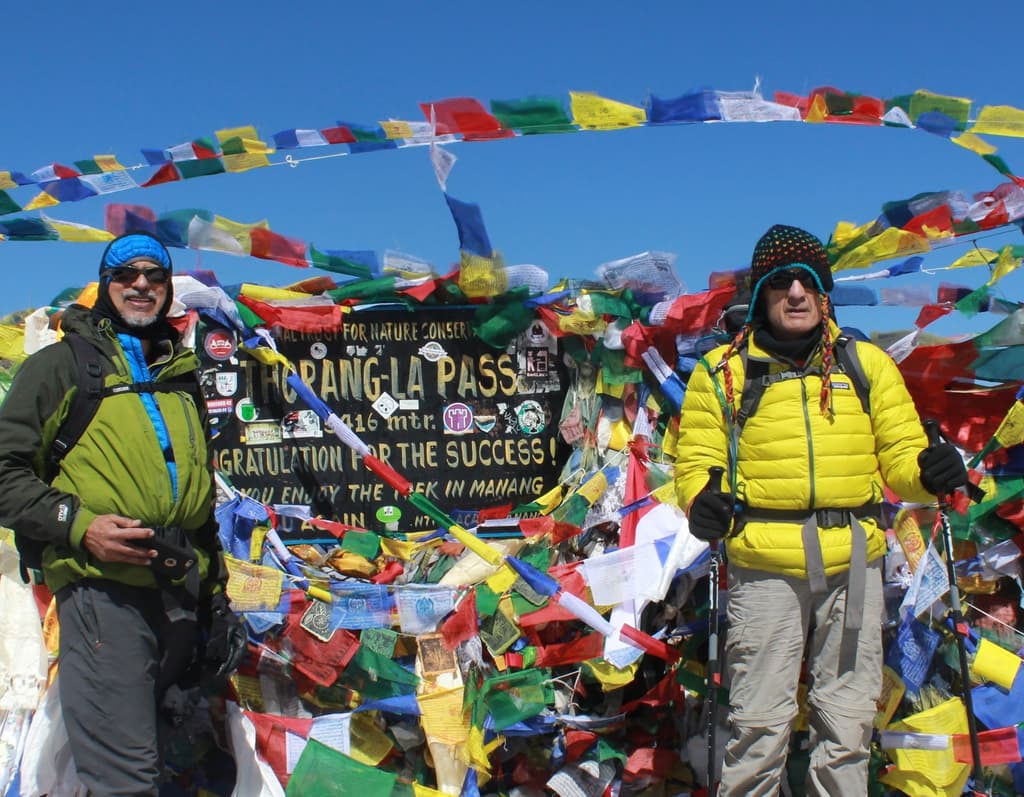
Post a Comment